An Alternate Fresh Cheese for Cheesepalooza from page 51 of Artisan Cheese Making at Home.
The photo of this cheese in Mary Karlin’s Cookbook had me at “hello!”. I knew I was making this cheese. Not too different that making chèvre, but specific moulds, salting process, air drying time and seasoning. I have made it twice. It is easy and unexpectedly delicious. I wouldn’t call it Cabécou, though. That cheese comes from a very specific terrior in France and is considerably different than this. The recipe or idea may be initially the same, but that is a problem with many artisanal cheeses made in the new world: they are called the same “old world” name. I am calling this Potted Little Goat made after the manner of Cabécou.
The small discs of cheese are layered between Herbes de Provence, a fresh bay leaf and exotic peppercorns bathed in a fruity golden olive oil I brought back from Italy last fall. Addie wanted to make it, as well, so we got together and gave it a go. I tasted it for the first time at the Cheesepalooza Challenge One Local Tasting and was blown away by the unexpected pleasure. The texture was so creamy and the herbes and spices were subtle, yet presented a very pleasing savory “hello!”. I knew at that moment that this cheese was a keeper. If you are a friend, this is my new hostess gift!
Having traveled to France more than a few times, when I saw the photo of this cheese on page 50, I knew I had to make it. Fresh and young cheeses hold my attention through my travels and I saw varieties packed in oil with seasonings like this one at the open air markets in the French country side. After reading that this recipe is from the Languedoc area of France, I was completely in, as I have been there, too. The open air markets where I recall seeing similar cheeses were in Provence and in the Aix en Provence areas. I could not taste, nor buy everything at that time, so I was eager to relax and work to make this at home!
Interestingly, Mary Karlin notes that this marinated version of the Cabécou originated in the United State by Laura Chenel and is one of her company’s signature cheeses. Also, learning more about this cheese has had me discover that it is claimed as a regional artisanal cheese in the Midi-Pyrénées area of France. I is claimed to be from Rocamadour, a medieval settlement erected directly on a cliff, in the rich countryside of Causses du Quercy. This area is one of the region’s oldest milk producers; it has chalky soil, marked by history and human activity, and is favourable for the raising of goats. A similar cheese is also known as Rocamadour. They are not the same cheeses, though some profess them to be. Cabécou is a ripened goat cheese, stinky with mild flavor and oh, so creamy inside. As it ages, it grows a mold, becomes stinky and hardens to a grating state. (That experiment will be next time.) This time I am keeping it in oil.
There is an authentic recipe for Cabécou cheese in this book. Anyone have it? How does the recipe compare to the recipe I used?
I have noted the information from the conversation about Cabécou on this site, which I have found to be most accurate:
- CABECOU/ROCAMADOUR (AOC) Made with raw goat’s milk, from the plains;this tiny, but highly pleasing cheese matures well, acquiring body and presence. Each year some 490 tonnes are produced in the triangle between Rocamadour, Gramat, and Carlucet. In the langue d’Oc, the old language of the south, a cabécou is a small goats cheese. The fresh, spring cheeses, smelling of grass and milk, are worth trying. The AOC “Rocamadour” reserved for goat’s milk cheeses, was granted on 16 January, 1996.
- CABECOU DE GRAMAT This fermier cheese has an affinage of a minimum of ten days. Uncooked, unpressed, 1.6-2 in diameter, 0.4-0.6 in high, 1.1-1.4 ounces weight, 45% milkfat, produced spring-autumn. Rind of natural mold.
- CABECOU A fermier Cabécou from the region of Quercy.
- CABECOU DE ROCAMADOUR (AOC) These small fermier and artisanal cheeses are small and mature rapidly. They have a thin rind, and a tender, creamy pate with a subtle scent reminiscent of milk and mold. The aftertaste is equally light, of sugar and hazelnuts. Affinage takes anything up to four weeks. Same dimensions etc as above.
- PICADOU This cheese is produced by wrapping a ripe Cabécou in walnut or plain leaves. It is then sprayed with marc of plums and preserved in an air-tight container. The crushed pepper adds spice to an already piquant cheese.
And, now, there is the “Potted Little Goat” from Edmonton, Alberta, Canada via Mary Karlin’s Artisan Cheese Making at Home. Smoky Valley Goat Cheese will hopefully be making and selling this cheese.
As Addie and I worked through the first process there were problems. There often seems to be, the first time. We didn’t have liquid rennet and it called for one drop mixed with five tablespoons of water. We worked on translating that with the tablet rennet we had and it worked well with my batch. We were doing two batches, so we decided to do one with our Mesophilic Mother Culture (Addie’s batch), and one with the C20G culture suggested in the recipe. The problem seemed to be that this culture is made specifically for chèvre and containes 1/4 teaspoon per packet for one gallon of milk. Mary Karlin’s recipe is for 2 quarts of milk, so we were a bit confused, and decided to use only 1/2 the package or 1/8th of a teaspoon of the culture, instead of the whole one as the recipe indicates.
The second time I made it, I used the entire package and the liquid rennet as suggested. Interestingly, the results were not vastly different. The first batch was somewhat more fragile. The discs were not as compact as the second batch. The Mother Culture batch didn’t work. We think possibly because we added too much rennet. We shared the rennet equally, but as it was a tablet and not completely dissolved, we thought that Addie’s batch needed a bit more. It was delicious, but looked and tasted like a loose feta and the disc actually shattered upon touch, which you will see in a photo below.
The first photo below is the curd from the second successful batch I made, and above is the curd from my first batch.
I am very proud of the moulds Vanja and I made with plastic glasses and his electric drill gun. He actually did most of the work after painstakingly watching me “having at ‘er”! They worked like a charm. If you look at the photos below, carefully, you will see Addie’s batch drain at lightening speed compared to mine, due to the difference in the curd. (We made both batches together, but I am differentiating them for explanation purposes only.)
Addie’s curd, above. Below you will see the turned discs of my first batch, and under that, my second ones, made using the Crottin mould. The cheese discs should be about an inch and a half high as these were.
You can see in the photo how much more dense the disc is in the second photo (second batch) than in the one above it (first batch).
Tasting Notes for Potted Little Goat Cheese:
- Appearance: somewhat compact little disc
- Nose (aroma): none
- Overall Taste: the affect of the balance between the herbs, spice and salt with the goat milk was immediate pleasure to my palate; the peppers added a je ne sais quoi to the tasting as there was not a peppery flavour, per se, yet there was a perfume that enhanced the flavour that was indiscernible: utterly delicious
- Sweet to Salty: salty
- Mild (mellow) to Robust to Pungent (stinky): very mild
- Mouth Feel: (gritty, sandy, chewy, greasy, gummy, etc.): unexpectedly creamy, a very pleasurable mouth feel
Valerie and Addie’s Cabécou Recipe (the first batch)
Ingredients:
- 2 quarts goat’s milk (we used low pasteurization milk Fairwind’s Farm bought at Planet Organic)
- 1/2 package (1/8 teaspoon) of C20G Mesophilic srter culture from New England Cheese Making Co. (This is their prepackaged Chévre starter and includes rennet in it)
- 2 teaspoons Diamond Crystal Kosher Salt
- 1 tablespoon herbs de Provence
- 4 fresh bay leaves
- 2 teaspoons whole mixed peppercorns
- 4 cups fruity extra virgin olive oil
Instructions:
- We followed the directions in her book exactly with the exception of adding the rennet and added only half of the C20G she suggested in her recipe (as explained above; Mary later answered that she had intended for the entire package to be used as the instructions actually say “good for up to 4 litres of milk.”)
- I didn’t have liquid rennet, so we used this mixed culture without adding extra rennet though Mary’s recipe calls for this exact starter culture, and the entire 1/4 teaspoon, or the full package for 2 quarts of milk; the recipe on the C20G package that was titled Chévre called for 4 litres of milk (correction: or “up to” 4 litres of milk), that is why we chose to use only half of it. This was very confusing as I went to the website and this was the only C20G starter I could find, and it was specifically for making chévre, yet Mary makes no mention of this in the recipe. This information is covered in Chapter 1, but I still needed more assurance. As well, we understood that the directions on the package call for 4 litres of milk and her recipe is for 2 litres using the same amount of culture. Maybe we should have added a drop of rennet to this. Only making it again, will tell me this.
- The second time I made it, I followed her recipe exactly, using the entire package of 1/4 teaspoon of C20G and the liquid rennet; it was a beautiful thing!
Below, are two of the peppercorn varieties I used, as well as the Herbes de Provence I brought back with me from France last summer.









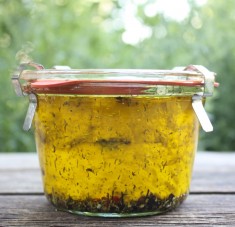

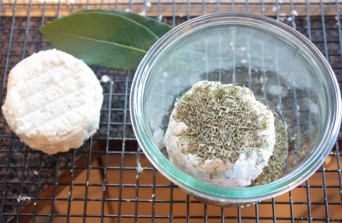

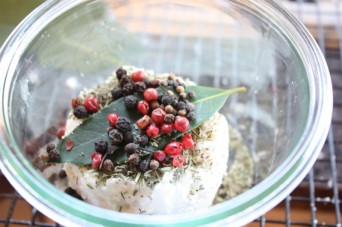






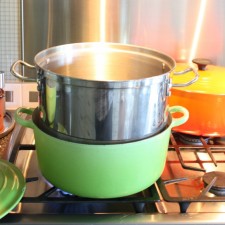


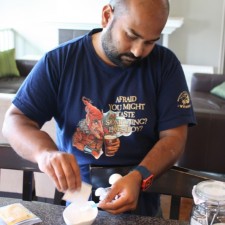



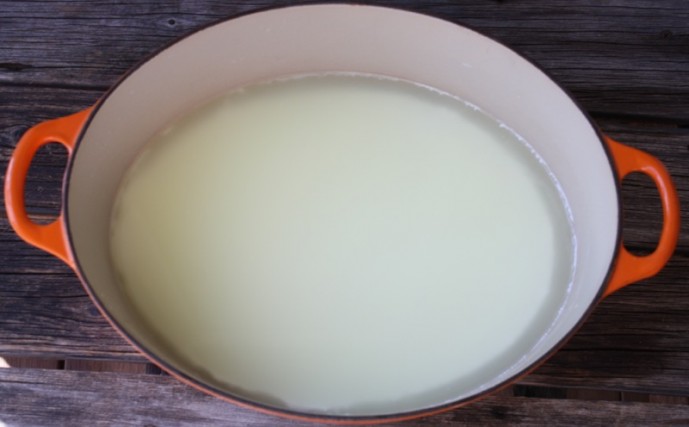
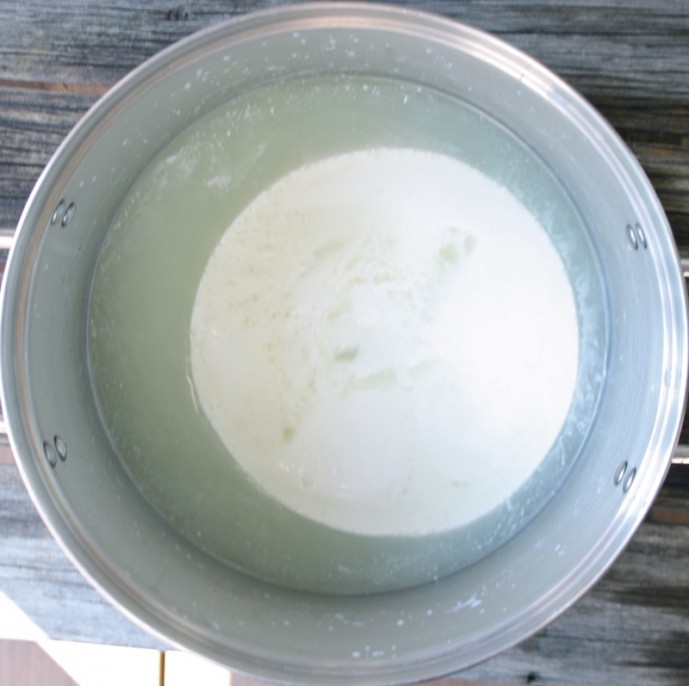
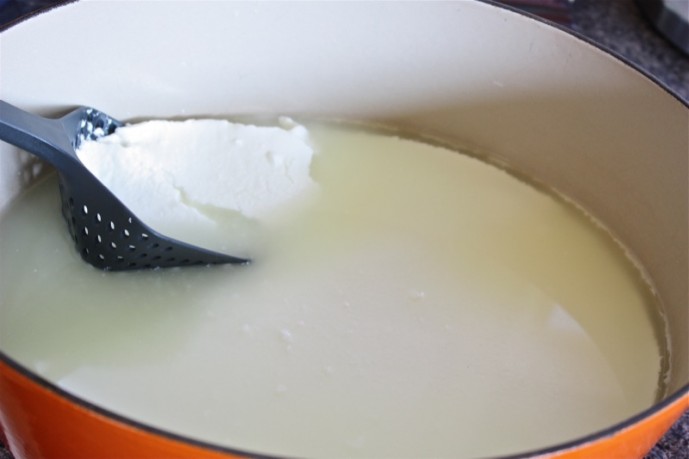

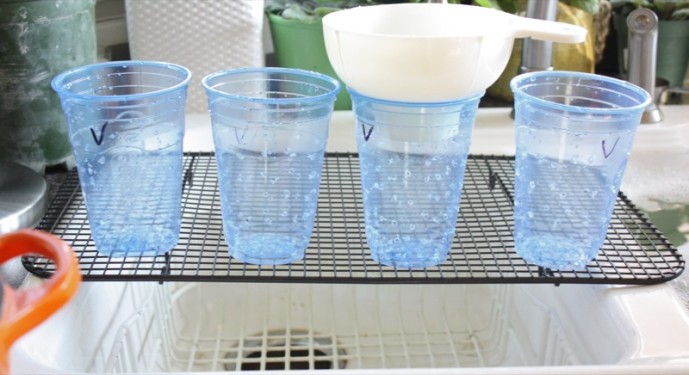









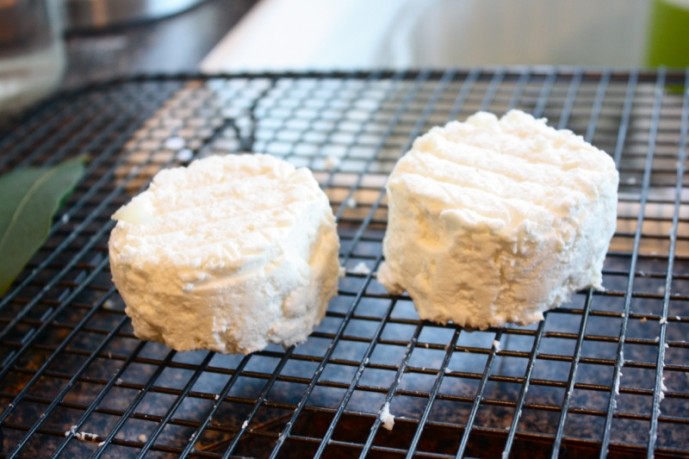












How delicious, Valerie! You are so clever at this cheesemaking.
Lizzy
Oh, I am clever, aren’t I? That must be why my husband calls me “Beavy”! 😉
I’m glad there are cheese makers out there. This looks absolutely delicious!
I really need to learn to make cheese. This looks really tasty. Totally agree that these would make great pressies.
ooh, this looks delicious! I’m going to use my in-laws coming to visit as an excuse to make this one I think.
This has me standing at attention Valerie.
I am impressed and like all the pictures. What an art to make cheese.
This looks like a far superior cheese to those packaged “spreadable” cheeses.
That looks pretty special Valerie. Definitely one I am going to try to make too and I just love your own homemade moulds! Perfect.. Now gotta get myself some plastic cups!
I love those homemade molds: what a nice idea! And I also like the small glass jars. I have a couple I bought some time ago and should go back for more: they are so cute. I am not familiar with the cheese you made, but I certainly like the small size, which allows eating in one session.
These cheeses look just amazing. This is something I would love to try.
Esme!
So wish you had time to join us! It is so much fun and would be a wonderful way to connect more often!
🙂
V
Although I’m REALLY late in joining I’ll be trying this recipe – part of the motivation is that I want to try making some small moulds.. sure would save on buying them! Anyone in NS want to get together and make some??
Another motivation is the draw of the name Mary uses – I spent a couple weeks in June in the midi pyrenees (near Rodamadour and close to the Quercy border) making cabecous (and milking goats!) and as you say, this recipe really isn’t cabecou, but it looks like a nice soft cheese – mini chevres in oils and herbs, or potted little goat – yum yum and your photos are delicious.
My understanding from cheesemakers in this region of France is that with Rocamadour being AOC protected that’s the only thing that stops the same cheese from just a few miles away from being called that (so we made the same cheese 10 miles away but they don’t call it that). The cheesemaker I worked with says cabecous refer to a broader range of cheeses (basically lactic small cheeses, disc like) which the ones outlined above fit within. You’ve inspired me to get organised and try to write up on my experience there – I do have a recipe from there for cabecou but it’s in french.. (also partly in my head..and the rest buried in a box somewhere) I’ll try to dig it out but might take some tracking.. Thanks for trying this one!
I have made this twice – and it is definitely a keeper, Heather!
What an incredible experience you have had. Yes, I wrote in depth, and tried to research the origin of the name of this recipe as much as I could and recognize that it is not really a Cabecou, even though that is the name of it in Mary’s book. I would DIE to have your recipe, and so would Ntala and Leslie! Ntala is a goat farmer and milks her goats every day – and Leslie is an artisan goat cheese maker!
SO SO happy you have found us!
🙂
V
Thanks for the cool pics and write up! I made MK’s Cabécou a week or so ago and have eight little jars of the stuff getting happy in the fridge. Oct 12th is the ten-day mark. Here’s a pic of one of them! http://i.imgur.com/c3DeC.jpg
Jeff!
That is absolutely gorgeous cheese! I will be making more soon for housewarming gifts come holiday season!
🙂
V
Good idea on the gifts! I am for sure going to make some kind of cheese in a little container to give to coworkers and others. I am inspired by your blog — the photos and all info imparted especially. I am going to create my own! I’ve already nabbed a cool url, http://www.culturedcooking.com. Probably take me a month or so to design it and get going. 😀
This looks absolutely amazing! I have to tell you though, and this is in all seriousness, if you like cheese you must go to Rocamadour and eat the real cabecou, it will really inspire you. It’s very smelly, very goopy, not powdery like chèvre or dense like feta, those cheeses are much less complex in flavour. Eating cabecou is like a religious experience, incredibly delicate yet very strong in flavour and it sits on the palate for a very long time. I could write an essay about this it’s so good but I’ll stop here and congratulate you again on your cheese, it looks delicious!
Cabecoulover
You have convinced me. Interestingly, I have been to France several times and seen the “real” cabecou at specialty shops, but did not buy it to taste it. You bet I will be doing that now… oh, my – has my cheese palate and taste memory changed since I have started making my own cheese. Your description had me on my knees!
🙂
Valerie
WOW! One day I hope I will make this. I remember rennet from times gone by.
For today I can only adapt your recipe to just marinate the plain pasteurised goat’s milk French fromage de chevre I have in the fridge- at $8 AU for 150grams and with 600 grams sitting in the fridge- it deserves to be dressed up to be more fully appreciated.
Thankyou for sourcing and sharing.
What a great idea! Even I didnt think of this!:)
V
Have you ever tried any of the cheese making kits from Halfords in Edmonton. They have a great selection. So far I have done mozzarella, chèvre, and of course ricotta from the leftover whey. I wish these goats were making more milk 🙂
HI Sarah
When we started making cheese, Halford’s wasn’t selling the kits, so I am well stocked in all sorts of large jars and packages that I ordered in bulk from Glengarry back then. Glad to hear you like them. Am jealous of your goats!!!
🙂
Valerie